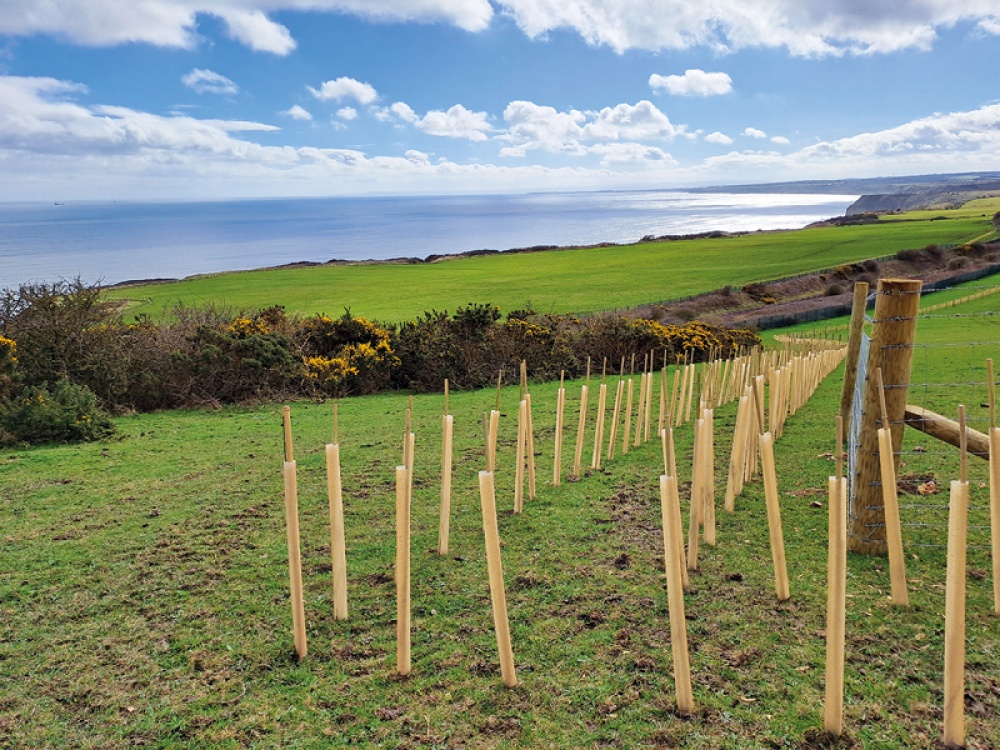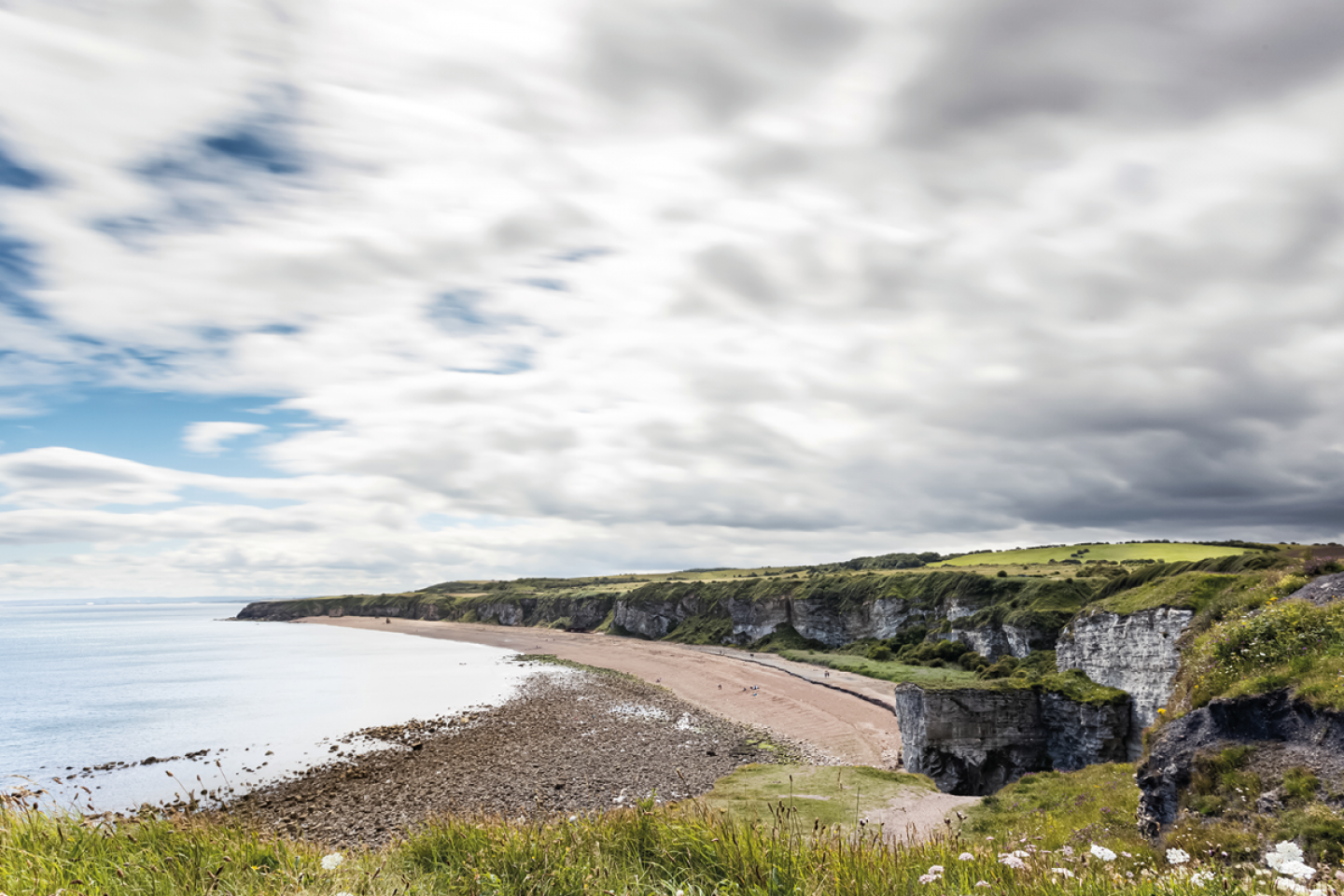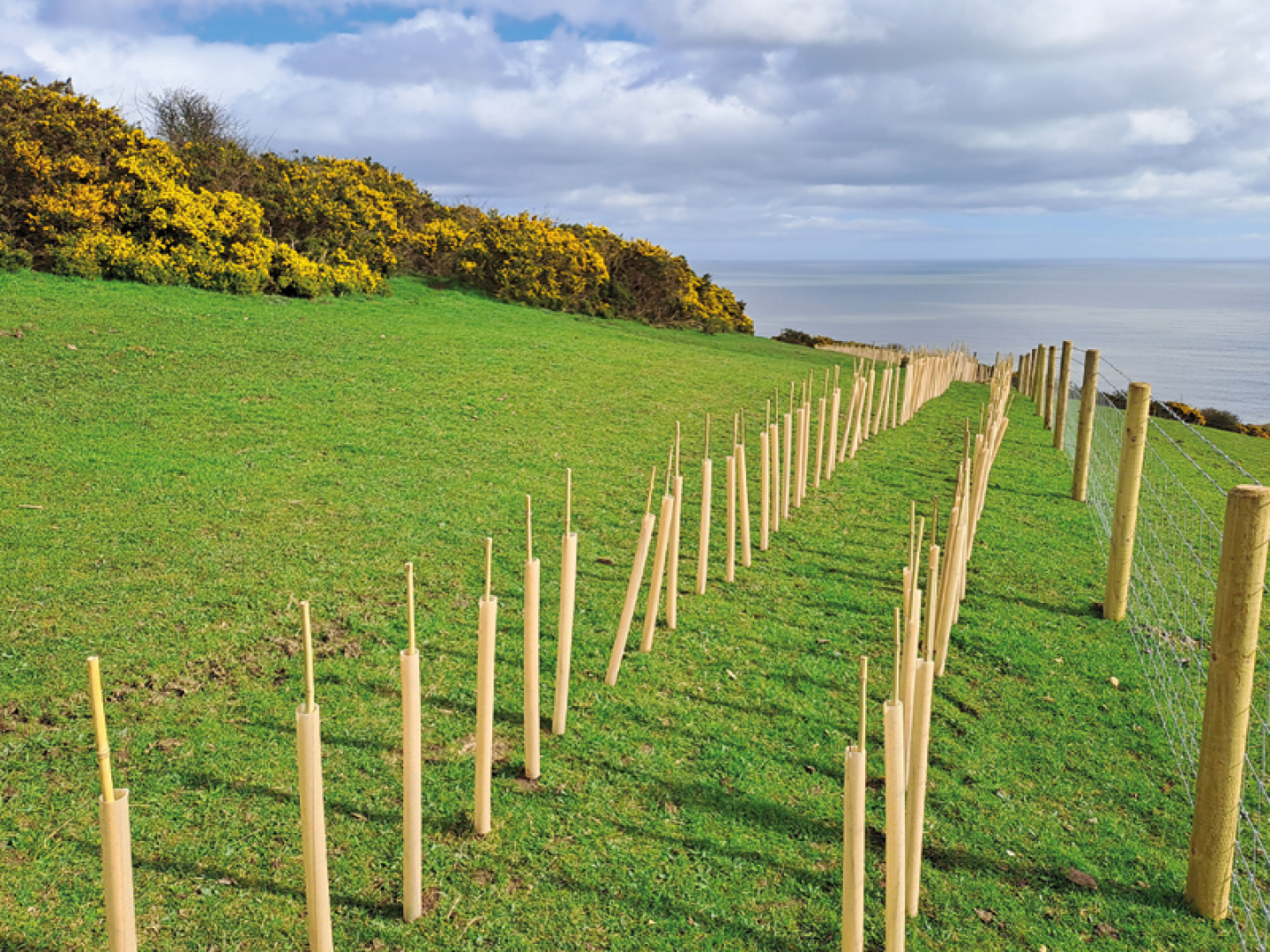How New Hedgerows Will Help Wildlife Thrive along the Durham Coastline

More than five miles of new hedgerows have been planted close to the Durham Coast
A National Trust project, supported by the North East Community Forest and overseen by Tilhill Forestry, saw 40,075 hedgerow plants being installed at two sites; White Lea Farm at Easington, and Cotsford Fields at Horden, with the aim of benefitting wildlife, plantlife and our climate.
Hedgerows are important for our countryside and its inhabitants, but sadly around half of Britain’s hedgerows have vanished since the start of the 20th century as a result of changing farming practices. This has meant there are now isolated patches of habitat and a real lack of food and shelter for wildlife. ‘Hedgerows have being removed to make way for bigger fields to make room for bigger tractors to plant more arable crops,’ explains Eric Wilton, General Manager at National Trust. ‘This project is our own way of reintroducing some of those historical features that would’ve really supported wildlife. Since the ‘60s, where hedgerows have been removed, we’ve seen a decline in bird species, invertebrates and mammals. By putting those [hedgerows] back in, they’ll provide more habitat. It’ll make the Durham Coast much more diverse, and a much more wildlife-friendly environment.’
These new hedgerows will feature a diverse mix of native species of hedge whips (small plants) and woodland trees and shrubs (including hawthorn, blackthorn, hazel, crab apple, wild privet, birch and rowan). The planting also includes a series of small woodlands, offering tree species such as English oak, field maple and Scots pine room to grow. Most of the hedges have been planted in five metre-wide ‘corridors’ whilst some have been planted alongside footpaths. ‘We’re putting a lot more plants into that environment but we’re also looking to under-plant some of the hedgerows with wildflowers, increasing the diversity even more,’ Eric adds. ‘Part of the scheme is about creating these large corridors. Then you’ve got the edge of the field which isn’t cut, where wildflowers can grow, and all of that will provide important food sources for different birds, butterflies, bees and mammals. There’ll be lots of berries and nectar that the hedgerows will provide and that will help to sustain more wildlife.’

The hedgerows are designed to connect habitats along the Durham Coast. ‘The project involved planting new hedgerows which link to woodland sites, one to the north of White Lea Farm (which is Hawthorn Dene) and the second to the south (Fox Holes Dene),’ Eric explains. ‘The hedgerows will run right through, from one woodland to the other, across White Lea Farm, and that’ll create a sort of interconnected corridor to provide habitats for birds, butterflies and mammals, but also provide food as well. A lot of birds, bats and mammals will use the hedgerow corridors as a way to move from one area to another knowing that they’re safe from predators because they’ve got shelter. It kind of made sense [to put] these hedgerows within that farm environment, linking the two denes, as it does provide a safer environment.’
It’s hoped that the planting will support declining bird species, such as the yellowhammer and song thrushes, as well as butterfly species including the brown hairstreak butterfly, bats and foraging bumble bees too. The hedgerows will also help to reduce the effects of climate change.
‘One of the key things about trees is that they take in carbon dioxide from the atmosphere and they produce oxygen, so this will help to reduce the impact of carbon dioxide on the climate,’ says Eric. ‘It’ll provide a cleaner environment across the Durham Coast and reduce the impact that we’re having on climate change.’


With its rugged cliffs, dramatic beaches and meandering paths, the Durham Coast is accessible for all, and locals and visitors are encouraged to explore this unique part of our region. ‘There’s the England Coast Path [National Trail] as well as footpaths through the farm, and it’s an open, welcoming site for everyone to explore and enjoy,’ Eric adds. ‘We want visitors to come and enjoy the site and by enhancing the wildlife value, it brings a great deal of value to people’s mental and physical wellbeing, being out in nature and out on this beautiful coastline. All in all, it’s an amazing coastline and we should be proud of it. The impact we’ve had in changing what were the black beaches of the ‘70s, ‘80s and ‘90s to an amazing magnesian limestone wildlife haven for all to enjoy in such a short space of time has been a massive effort – really changing and improving the wildlife potential on the Durham Coast and the unique habitat we have here. This is just another element to that. We’ve been very fortunate to work with North East Community Forest and Tilhill [Forestry] to bring this to life and deliver it.
‘I grew up in Cornwall – a very touristy destination – but when you get out of those tourist areas there’s this amazing coastline that had been ravaged by mining, for example. The change that’s happened in Cornwall over the last 50 years on the coastline and the improvement in nature is something we should be aiming for here on the Durham coastline, and I think it’s perfectly achievable. It’s really exciting to be part of driving that forward.’
The National Trust has bought another area of farmland and are looking to expand their woodland and hedgerow planting south of Fox Holes Dene. ‘We’ll be converting half of that area back into magnesian limestone grassland, which is a really significant and important grassland habitat on the coast here,’ Eric adds. ‘I think you find 97 percent on the Durham Coast and in South Tyneside on The Leas. We own nine miles of that habitat, so it gives us an opportunity to start converting that arable land back into a really important habitat. We’ll see a change immediately in terms of when we plant the trees, but the grass will mature over the next 10 to 15 years, and it’s an ongoing process to continue to manage that in the right way to improve the grassland to create as diverse habitat as possible for wildlife.’
For now, Eric encourages members of the public to see the work that has taken place on their next trip to this stretch of the coast, and for those with green fingers to get involved in future planting. ‘We offer opportunities for people to volunteer and get involved in the planting and to really support the work that we do,’ he says, ‘and there’s definitely more to come!’







